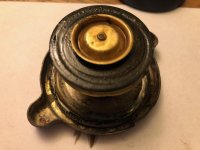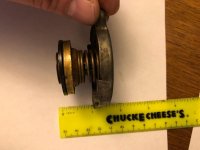mikeamondo
Jedi Hopeful
Offline
So now that I'm able to test drive a bit... what is the proper / ideal running temp for my 1275 powered Bugeye? And, at what temp do I need to pull over and let it cool down?
Sitting it traffic last time, it was approaching 200... I'm thinking that's way hot, but I need to test it more to get good results.
Thanks!
Sitting it traffic last time, it was approaching 200... I'm thinking that's way hot, but I need to test it more to get good results.
Thanks!

 Hi Guest!
Hi Guest!

 smilie in place of the real @
smilie in place of the real @
 Pretty Please - add it to our Events forum(s) and add to the calendar! >>
Pretty Please - add it to our Events forum(s) and add to the calendar! >> 

